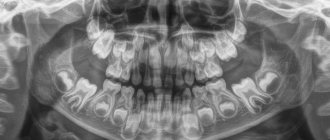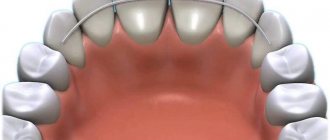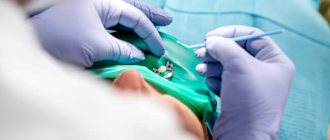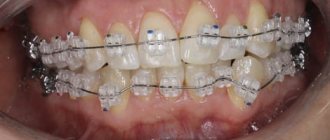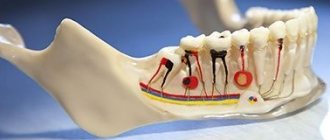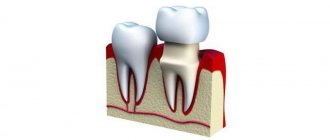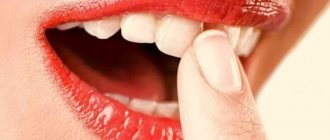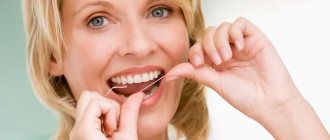The condition of your teeth is a reflection of the health of the body as a whole. If it is unsatisfactory, then we can draw a conclusion about existing disturbances in the functioning of the body systems. In addition, a healthy smile is the key to success in work and personal life. In this article we will look at what types of teeth are present in each person’s mouth, and how milk teeth differ from molars.
Functions
Our teeth are formations in the oral cavity of a bone structure that have their own structure, shape, circulatory and nervous systems, and lymphatic vessels. The teeth are located in the jaws in a certain order, and each type performs its own functions. Teeth are directly involved in the formation of sounds and the formation of speech, as well as in respiratory function. One of the main tasks of teeth is the primary processing of food, that is, the process of chewing, thus ensuring the vital functions of the body. What types of teeth are there? This is a common question. Let's figure it out.
Food that has not been properly chewed will be poorly digested and can cause the development of serious pathologies in the functioning of the gastrointestinal tract. The loss of even a few teeth can greatly affect your diction, which can make it difficult to communicate with other people. Appearance also changes when teeth are lost, as facial features may become asymmetrical. If teeth are in poor condition, bad breath occurs, and the risk of developing various diseases and infections in the body increases.
Probable diseases
Let us list the problems that are characteristic of this particular type of teeth:
Caries is the most common disease of incisors.
- The most common disease is caries . It occurs under the influence of harmful factors: dental plaque, pathogenic bacteria and poor oral care can trigger the development of the disease.
- First, caries affects the enamel, then as it develops, it deepens and affects the next layer - dentin. Then the development of caries reaches the nerve and pain occurs. If treatment is not taken at this stage, the bacteria reach the pulp. Pulpitis develops - this is an inflammation of the nerve. It is dangerous because it can provoke further inflammation of the gum bone.
- Periodontitis is an inflammation that affects the tip of the tooth root. Manifests itself as swelling of the gums. Occurs due to untreated pulpitis or improper filling of the root canal.
- Periostitis , or otherwise flux, is inflammation of the periosteum due to untreated periodontitis. It looks like a lump on the gum in the root area. It can also be caused by ordinary caries and pathogenic bacteria, staphylococci, streptococci, etc. Most often affects the lower jaw.
- Granuloma is the growth of inflammatory tissue of the tooth root. It occurs as a result of untreated pulpitis, periodontitis, trauma, or in the presence of caries. If treatment is not started in time, the disease develops into severe forms, such as gumboil.
- dental cyst is a capsule with pus at the apex of the root that appears due to infection in the root canals. Occurs due to pulpitis, periodontitis or caries.
- Injury to the incisors can occur due to mechanical damage to the crown. This could be a bruise, crack, root fracture, dislocation, etc. With such problems they turn to traumatology. Depending on the degree of damage, treatment is prescribed: therapy aimed at maximizing the preservation of the dentition, endodontic treatment, restoration of the crown with special materials, restoration. If treatment is impossible, then they resort to removal and subsequent implantation or prosthetics.
- Hypersensitivity. Sensitivity manifests itself from exposure to cold, hot, spicy, sour, sweet foods. Pain may also occur when brushing your teeth or when going out into cold air.
Despite their size, incisors are quite fragile. They reach a length of up to 9 mm and a width of up to 6 mm. Not only the appearance of a person, but also the entire chewing process depends on their condition.
Beautiful front teeth mean a beautiful smile. Take care of your teeth, because they are the only organ in the human body that does not repair itself.
Incisors
Front row of teeth, four each on the upper and lower jaws. The main purpose of the incisors is to bite food to separate it into smaller parts. The structure of this type of teeth is characterized by the presence of a flat, chisel-shaped crown with sharp edges. Teeth sections have cusps that wear away over the course of a person’s life. The two largest incisors are located on the upper jaw; they are located in the center of the dentition.
The lateral ones are similar in structure to the central ones, but differ in smaller size. The cutting edge of the lateral incisors is also tuberous and sometimes takes on a convex shape due to the development of the central protrusion. The root of the incisors is flat, single and conical. A feature of the incisors is the protrusion of the three tips of the pulp from the back of the tooth. The upper teeth are different from the lower teeth. The central incisors on the lower jaw are smaller than the lateral ones, and their roots are shorter and thinner. The front part of the tooth is somewhat convex, and the back is concave. The crowns of the lateral incisors are somewhat curved towards the lips and narrow. The edge of the tooth is biangular (the central angle is acute, the lateral angle is obtuse). A characteristic feature of the root are longitudinal grooves. What other types of teeth are known?
Teething sequence
Although the order in which baby teeth appear is only approximate and may differ for each individual child, parents should focus on the following sequence:
- The first teeth in most children, as we noted above, are the central incisors, called “ones” for their position in the dentition.
- Then they are supplemented by lateral incisors, which are called “twos”.
- After the incisors, the time comes for the appearance of the first molars, which appear in “fours” in the dentition.
- The next stage is the eruption of the canines between the lateral incisors and the first molars, which is why they are called “triples.”
- The last of the baby teeth to emerge are the “fives,” which dentists call second molars.
Fangs
Helps separate food into small pieces. An anatomical feature of teeth is the presence of a groove on the back side of the crown, dividing the tooth into two disproportionate parts. One tubercle stands out on the cutting edge of the fangs, so the teeth of this species take on a cone-shaped shape, reminiscent in structure of the teeth of predatory animals. On the lower jaw, the canines are narrower, and parts of the crown converge on the central tubercle. The canines have the longest roots compared to other teeth, which also deviate inward. There are a total of four fangs in the oral cavity, two each on the upper and lower jaws. Together with the lateral incisors, the canines create an arch with the transition from cutting to chewing teeth. The main purpose of chewing teeth is mechanical, thorough processing of food. The types of teeth don't end there.
Premolars
There are 8 such teeth in total, four each on the upper and lower jaws. The first premolar, unlike the incisors and canines, has a prism shape, and the crown is characterized by a convexity. On the chewing surface you can count two tubercles, namely, lingual and buccal, between which there are grooves. The buccal cusp is larger than the lingual cusp. The first premolar has a flat, bifurcated root. The types of teeth in the photo are presented in detail.
The second premolar is similar to the first in shape, but the buccal surface is wider and the root is presented in the form of a cone, which tapers in the anteroposterior direction. The chewing surface of the first premolar in the lower dentition is asymmetrical towards the tongue. The crown of the tooth is round, with a flat single root having grooves on the front surface. The second premolar is larger than the first, which is explained by the identical development of both tubercles, and the depression between them resembles a horseshoe in shape. The root of the second premolar is similar to the first.
When should you see a dentist?
It is recommended to show the baby to a pediatric dentist in the following situations:
- Teeth appear later than usual or will not erupt at all.
- The teeth came out too early.
- Any tooth is missing.
- The order of appearance of teeth is disrupted.
- The tooth has formed incorrectly.
- The tooth came out far from the arch of the dentition.
- A black edging appeared on the neck of the tooth.
- There is a large gap between the permanent central incisors.
- The enamel has acquired a reddish, greenish or yellow-brown tint.
- The tooth was damaged.
Molars
The largest tooth is the first molar, located on the upper jaw. The crown is rectangular in shape and the chewing surface is diamond-shaped with four cusps, the space between which is H-shaped. This type of tooth has three roots: one large and two flat cheeks, which have a deviation in the anteroposterior direction. The molars are connected when the jaws are clenched, so the load on them is maximum and, accordingly, they tend to wear out greatly during a person’s life.
The second molar is smaller than the first. It has a cube-shaped crown and an x-shaped depression between the tubercles. The roots of the second molar are the same as those of the first. The location of the molars, as well as their number, is absolutely the same as that of the premolars. The first molar on the lower jaw has as many as five tubercles designed for chewing food, including three buccal and two lingual with an F-shaped depression. The tooth has two roots, with one canal in the back and two in the front. The anterior root is also longer than the posterior one. The second molar, located on the lower jaw, is identical to the first. Many people are interested in types of teeth.
Why might teething be delayed?
If the baby has not yet developed a single baby tooth by the age of one year, it is worth taking the child to the doctor and finding out the reasons for this situation. They may include:
- The influence of hereditary factors. If mom, dad or other close relatives erupted teeth later than average, then the situation will be the same for the baby.
- Lack of calcium, which also provokes rickets.
- Lack of hormones produced by the thyroid gland.
- Problems with digestion and absorption of nutrients.
- Absence of tooth buds.
- Prematurity of the child.
- Development of an infectious disease.
How do teeth appear?
As you know, a child’s baby teeth grow first, and this happens until about three years of age. Temporary teeth grow in the amount of 20 pieces.
Although the histological and anatomical structure of primary teeth is identical to permanent teeth, there are certain features:
- The crown of a baby tooth is smaller than that of a molar tooth.
- Thinner enamel and less mineralization of dentin compared to molars. This becomes a common cause of caries development in children.
- The pulp and root canal are wider than those of molars, which increases the risk of penetration of pathogenic microorganisms.
- Weakly defined tubercles on cutting and chewing surfaces.
- The incisors of primary teeth are more convex than those of permanent teeth.
- The roots are not as strong and long compared to permanent teeth and are curved towards the lip. This makes changing baby teeth to root teeth a completely painless process.
At what age do molars begin to emerge in children?
For a child, each new tooth does not go unnoticed. The most difficult period is considered to be the formation of the first teeth, causing increased pain and irritability.
Such unpleasant sensations are associated with the peculiarities of the manifestation of each tooth - as it develops, it breaks through the gum, which causes pain and inflammation in it.
When breastfeeding or bottle feeding, blood rushes to inflamed and swollen gums, thereby exacerbating their sensitivity. The child feels significant discomfort while eating, so he may refuse to eat.
Such sensations are new to babies, and as a result they experience strong emotions. Self-selecting remedies to relieve symptoms may not be successful. The best solution would be to seek help from a pediatrician.
Teething is a natural and inevitable process that largely affects the overall well-being of the child. Parents should be aware that the intensity of symptoms gradually weakens with each new tooth. Subsequently, teething does not cause significant difficulties until the appearance of molars.
Types of dental prostheses
Dental dentures can be removable, fixed, conditionally removable, or combined. Partially removable dentures are clasp, telescopic, one-sided - made to replace several teeth, immediate dentures (temporary structures that are installed on one tooth). Fixed dentures - dental bridges, microprostheses (inserts, crowns, veneers), dentures on implants.
